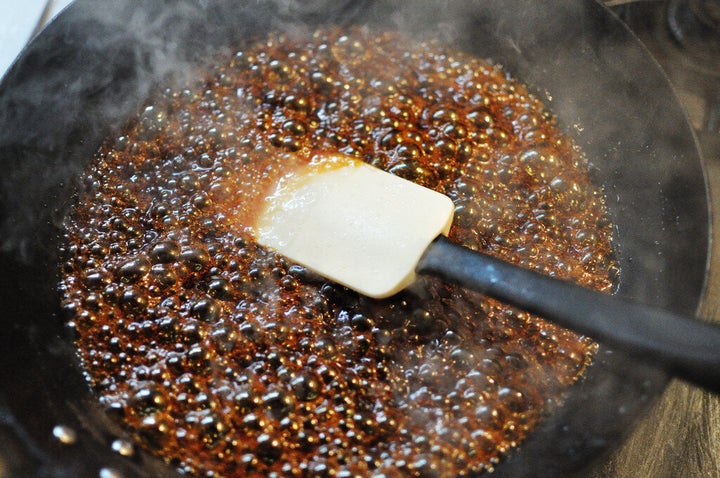
Melting sugar for candy always feels like a vaguely arcane process. You put the raw white sugar in a pan, turn up the heat, and wait for something to happen. Sometimes it goes fast, sometimes it takes forever. There are guides to the different stages it passes through before becoming caramel, but they're horribly confusing. (Soft ball, hard ball, crack... who can tell the difference?).
Home cooks, apparently, aren't the only ones who have been mired in confusion. Different scientific sources have disagreed wildly on the exact melting point of sugar for ages. Some say 140 degrees Celsius, some say 160. A new study on sugar melting from Shelly J. Schmidt of the University of Illinois may provide an explanation.
The sugar melting study showed that the reason scientists and cooks haven't been able to isolate a definitive melting point for sugar is that sugar doesn't melt—it decomposes. This means that, rather than melting at one definitive temperature, sugar can become a liquid at different temperatures depending on heating rate. If you heat sugar quickly, using extremely high heat, it will melt at a higher temperature than it would if you heat it slowly, using low heat.
Everyone had assumed that sugar behaved like crystals and metals, which have the ability to melt and re-solidify at a definitive and predictable temperature. But Schmidt's new study puts sugar in a category closer to other complex organic compounds like wood and paper, which break down into simpler compounds, like carbon dioxide and oxygen, before they "melt." So there is no such thing as liquid sugar, just as there is no such thing as liquid cardboard.
The study's real-world implications are to be determined. But candy producers and sugar artisans, armed with this new scientific knowledge, may be able to push their craft in unforeseeable directions.